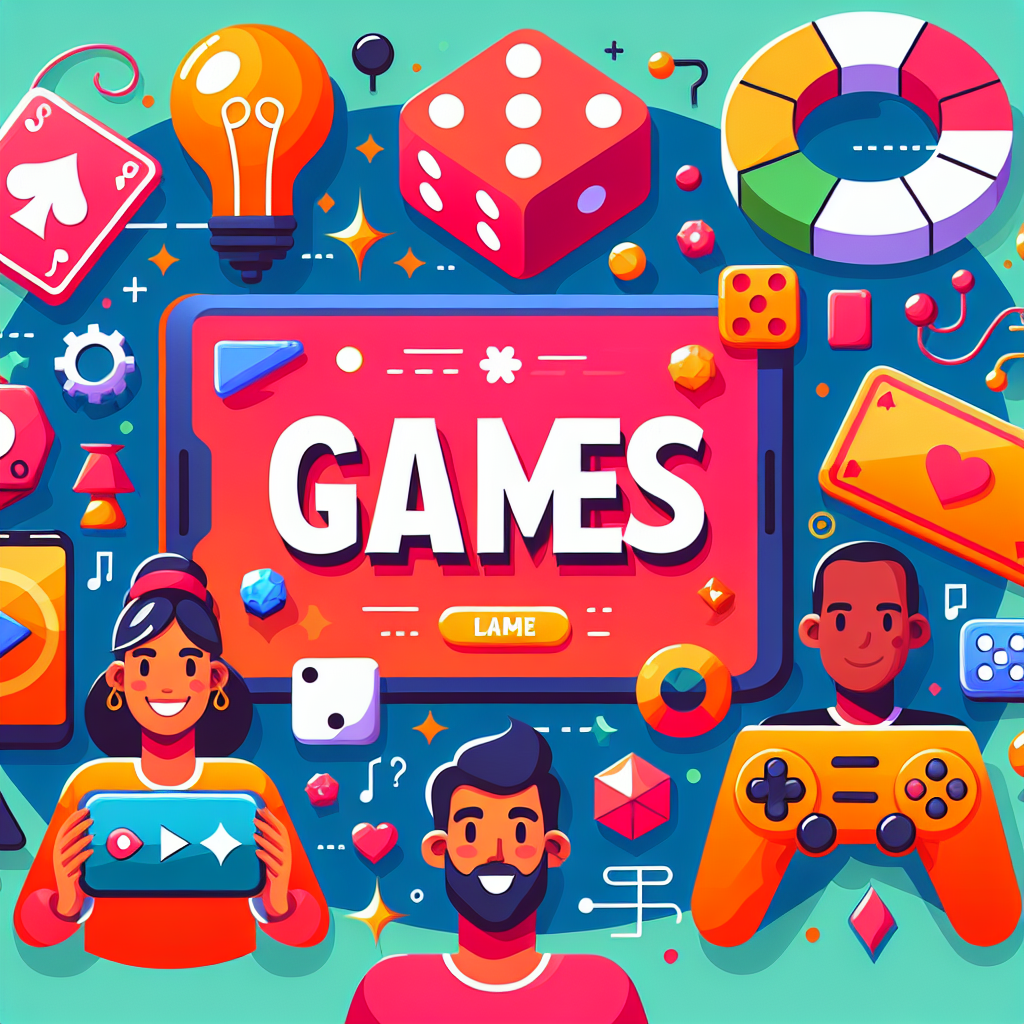Level Up Your Gaming Experience: Unlocking the Secrets of Game Design

Level Up Your Gaming Experience: Unlocking the Secrets of Game Design
If you’ve ever played a video game and found yourself utterly captivated, you may have wondered: What makes these games so engaging? Understanding game design can transform your gaming experience from casual enjoyment into a deeper appreciation, as well as a boost in your gaming skills. In this article, we'll explore the fascinating world of game design, revealing the art and science behind the games that hold our attention for hours. Whether you're a casual gamer or an aspiring developer, uncovering these secrets can elevate your gameplay and enhance your enjoyment.
The Allure of Game Design: Why It Matters
Imagine you’re diving into an expansive open world full of quests, characters, and secrets. The thrill of discovering a hidden treasure or completing a challenging mission is not merely by chance; it’s the result of meticulous game design. Good game design captivates players by creating immersive experiences that blend storytelling, challenges, and rewards. For example, games like "The Legend of Zelda: Breath of the Wild" skillfully intertwine exploration with a compelling narrative, making every discovery feel rewarding.
Understanding game design is crucial because it helps players recognize the mechanics that keep them engaged. It’s like knowing how a magician performs tricks—you appreciate the skill and artistry behind the illusion. When you grasp the principles of game design, you can strategize and anticipate game mechanics, leading to improved performance and satisfaction as you conquer obstacles with newfound insight.
Core Concepts of Game Design Explained
At its core, game design is about creating engaging experiences. Here are some fundamental concepts that contribute to this magic:
Mechanics
Mechanics are the rules and systems that govern gameplay. They dictate how players interact with the game. Think of them as the laws of nature in the gaming universe. In racing games, for example, mechanics define how speed, handling, and terrain affect your performance. Knowing these mechanics helps you navigate challenges effectively—like when to drift in “Mario Kart” or when to boost in “Need for Speed.”
Dynamics
Dynamics emerge from the interaction between mechanics and players. They are the patterns and behaviors that arise during gameplay. Consider how each player approaches a mission differently in a game like "Overwatch." You may strategize with a team-oriented approach, while another player goes solo. The dynamics of gameplay depend on player choices, creating unique experiences every time you play.
Aesthetics
Aesthetics refer to the emotional responses evoked by a game. The graphics, sound design, and narrative all contribute to the overall atmosphere. Take "Journey," for instance—its stunning visuals and haunting music create a sense of wonder and solitude. Developers leverage aesthetics to immerse players, ensuring every moment feels impactful.
Balance
Balance is critical to maintain fair challenges and player engagement. A well-balanced game allows players of all skill levels to enjoy the experience, whether they’re seasoned veterans or newcomers. “Dark Souls” is notorious for its difficulty, but the sense of accomplishment players feel after defeating a challenging boss comes from the intricate balance of risk and reward.
Surprising Facts About Game Design: Myths vs. Reality
While many enjoy gaming as a pastime, misconceptions about game design often persist. Here are a few surprising truths that debunk common myths:
Myth: Game Design is Primarily About Graphics.
Reality: Graphics play a role, but gameplay mechanics and storytelling are far more critical. A visually stunning game can fall flat without solid mechanics.Myth: Only Programmers Can Make Games.
Reality: While coding is essential, game design thrives on creativity. Artists, writers, and musicians all contribute, making it a collaborative effort incorporating diverse talents.Myth: Game Designers Play Games All Day.
Reality: Game designers spend significant time analyzing data, testing gameplay, and refining mechanics. It’s less about playing and more about understanding player behavior.Myth: More Content Equals a Better Game.
Reality: Quality often trumps quantity. A well-designed experience with fewer elements can engage players more profoundly than a sprawling game with weak mechanics.
Practical Tips to Enhance Your Gaming Experience
Ready to dive deeper into the world of game design? Here are some practical tips and mini-experiments you can implement right now:
Analyze Game Mechanics
Next time you play a game, take notes on its mechanics. Pay attention to how they make you feel and how they affect your gameplay. Understanding these mechanics can help you strategize for future playthroughs.
Engage in Community Discussions
Join online forums or social media groups focused on game design. Engaging with fellow gamers and developers can offer fresh perspectives and insights into the creativity behind your favorite games.
Try a Game-Making Tool
Feeling adventurous? Experiment with game-making software like RPG Maker or GameMaker Studio. These tools allow aspiring designers to create simple games and understand the fundamental principles of game design firsthand.
Play Games Differently
Challenge yourself to play games in alternative ways. For instance, try completing "Minecraft" without using any tools or play a fighting game without blocking. This forced creativity can deepen your understanding of game mechanics.
Study Game Reviews
Read reviews for games you enjoy, focusing on mechanics, dynamics, and aesthetics. Analyzing expert opinions can provide valuable insights into what makes a game resonate with players.
FAQ: Your Game Design Questions Answered
1. What is the most critical aspect of game design?
While all elements are important, gameplay mechanics often take precedence, as they directly influence how players interact with the game.
2. Can playing more improve my game design skills?
Absolutely! The more you play different genres, the better you’ll understand various mechanics and perspectives, enhancing your overall skills.
3. Is game design only for video games?
No! Game design principles apply to board games, mobile games, and even educational games. The fundamentals remain consistent across mediums.
4. How can I get into game design?
Start by learning the basics of programming, art, and storytelling. There are many online courses and resources available for aspiring game designers.
5. Are there professional game designers?
Yes, many game designers work for well-known studios, while others create independent games. The industry is diverse, accommodating various styles and approaches.
6. Can I make money from game design?
Yes! Many designers earn income through game sales, crowdfunding, or working with established game studios.
A Twist to Challenge Your Gaming Perspective
As you delve into the world of game design, consider this twist: every game you play is a lesson in creativity and strategy. The next time you’re engrossed in a fight or exploring a vast landscape, think of yourself as a detective uncovering the secrets behind the game. What if you approached each gaming session as an opportunity to dissect the design, discovering what makes it enjoyable or frustrating?
What to do right now:
- Choose a game and analyze its mechanics.
- Join an online community focused on game design.
- Experiment with a free game-making tool.
- Play a familiar game with a new challenge in mind.
- Share your discoveries with fellow gamers.
Unlocking the secrets of game design is not just an academic endeavor; it’s a path to elevating your gaming experience and enhancing your appreciation for the art form. Happy gaming!


